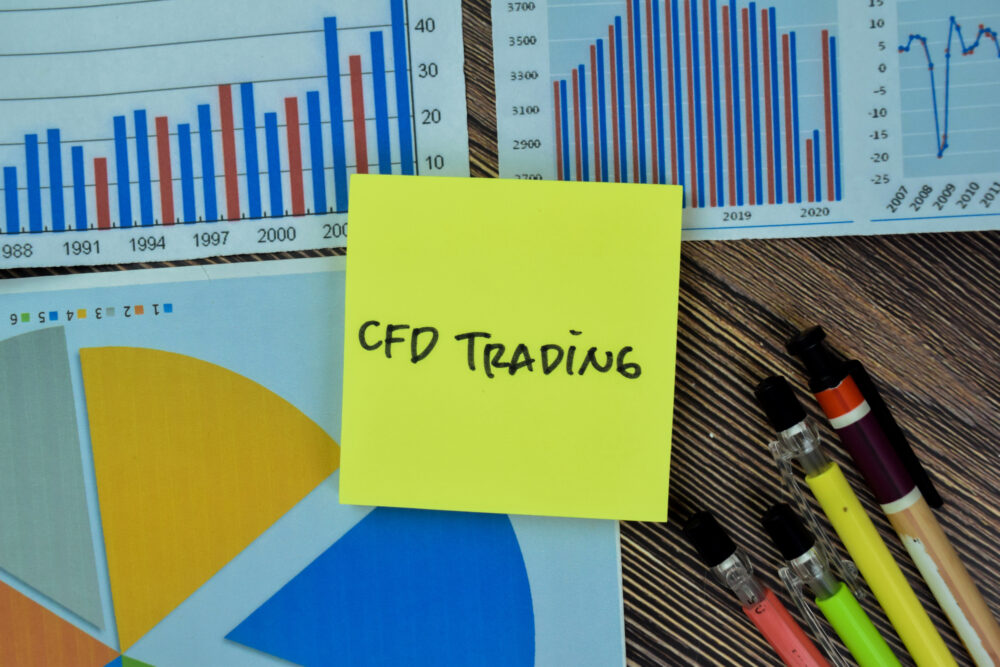
Imagine you’re at a lavish buffet, eyeing an array of mouth-watering dishes. Each dish represents an investment avenue, tempting in its own right. But you wouldn’t want to overload your plate with just one dish, no matter how scrumptious it seems. Instead, you’d probably want a taste of everything, a balanced mix to savor the array of flavors.
The world of investing is much like that buffet. With many choices at your fingertips, the key is to diversify, to sample a mix of everything. In the financial world, this means exploring avenues like CFDs, stocks, and shares. Ready to fill your plate? Read on to learn how you can make the most of these options, ensuring a fulfilling investment feast.
You might have asked, ‘What are CFDs?’ a few times. Hang tight because that’s our first stop.
Understanding CFDs: A Simple Breakdown
CFD stands for Contract for Differences. Sounds fancy, right? But it’s quite straightforward when you break it down.
- How Does It Work?
Imagine buying an actual asset, like a stock or gold; you’re making a deal based on the price movement of that asset. It’s a bit like making a prediction.
You’ll enter into a contract with a broker, agreeing on the current price of an asset. When you close the contract, if the asset’s price has gone up and you predicted it would, you pocket the difference. On the flip side, if you thought it’d rise but it falls, you’re on the hook for the difference.
- Why Choose CFDs?
CFDs allow you to bet on prices going up or down, so there’s potential to profit in both rising and falling markets. Also, they offer a way to get exposure to different markets and assets without the need to own them outright.
With great power comes great responsibility. Because of their leveraged nature, CFDs can be riskier than traditional investing. It’s possible to lose more than your initial investment. So, always tread cautiously and be sure you’re aware of the potential pitfalls before diving in.

Stocks: A Piece Of The Company
When you hear about stocks, you might instantly think of Wall Street, traders shouting, and numbers flickering on screens. But at its core, investing in stocks is much simpler.
- Ownership Matters
When you buy a stock, you become a shareholder in that company. Think of it as grabbing a piece of the corporate pie. This means you have a stake in the company’s success and failures.
- Stocks Aren’t Just For The Rich
There’s a misconception that you need to be swimming in cash to invest in stocks. That’s far from the truth. Many platforms now allow fractional stock buying, so you can start investing with just a few bucks.
Stocks are more than just numbers on a screen—they’re slices of companies you believe in. With careful planning, a dash of patience, and continuous learning, you can confidently navigate the stock market.
Shares: They’re Not Just Stocks
You’ve probably heard folks toss the terms ‘stocks’ and ‘shares’ interchangeably. At first glance, they do seem to be two peas in a pod. But let’s break it down:
- The Whole vs. The Part
When you talk about ‘stocks,’ you’re referring to your overall ownership in a company. Imagine it’s a cake you baked (or, okay, bought).
On the other hand, ‘shares,’ are the individual slices of that cake. Each slice represents a specific portion of the company.
- Ownership And Rights
Buying stocks means you’re getting into the ownership game of a particular company. It’s a general term.
With shares, you’re pinpointing the exact units of that ownership. Each share you purchase gives you specific rights in the company, like voting on certain matters.
So, the next time someone throws around ‘stocks’ and ‘shares’ in a chat, you’ll know the subtle dance between the two. Remember, it’s all about the big picture versus the details.
Diversifying: Why Not Put Your Eggs in Multiple Baskets?
Diversification might seem like just another fancy word, but it’s an essential strategy when it comes to managing your investments. Here’s the lowdown:
- Spreading The Risk
Diversification ensures that a decline in one sector or asset doesn’t sink your entire portfolio. Sure, you might face losses in one area, but gains in another can help offset those bumps.
- Potential For Higher Returns
By diversifying, you’re giving yourself a shot at capturing the returns of different sectors and assets. Some areas might be lagging, but others could be booming. So, while one part of your investment might be having a bad day, another could be hitting it out of the park.
Diversification isn’t just about playing defense; it’s about setting yourself up for success. By spreading out your investments, you’re not only protecting yourself from potential pitfalls but also giving yourself more chances to capitalize on opportunities.
The Takeaway
Taking control of your financial future starts today. Dive into the world of CFDs, stocks, and shares with confidence and curiosity. Remember, the best investor is an informed one. So, arm yourself with knowledge, ask questions, and take that bold step forward. Your diversified portfolio awaits—don’t let it wait any longer!
Comments